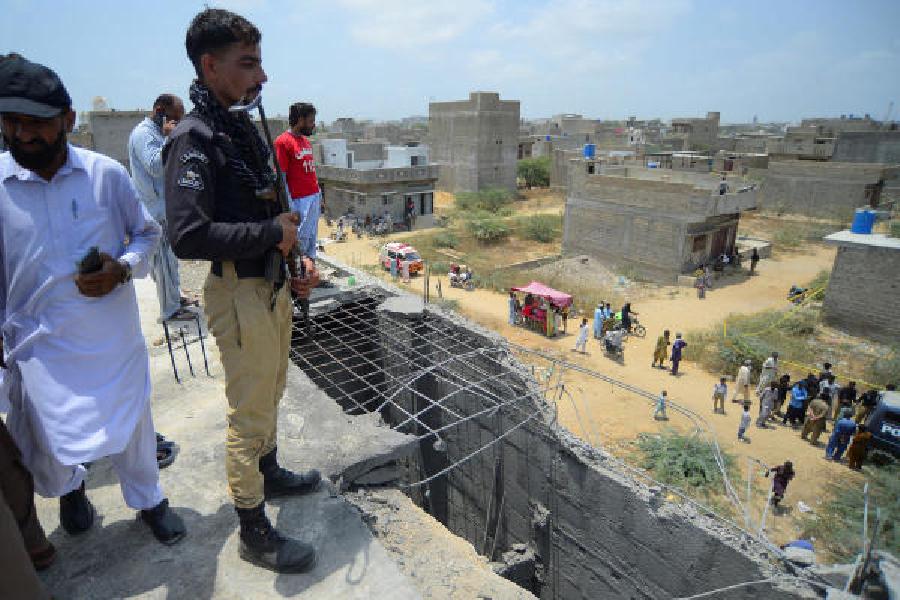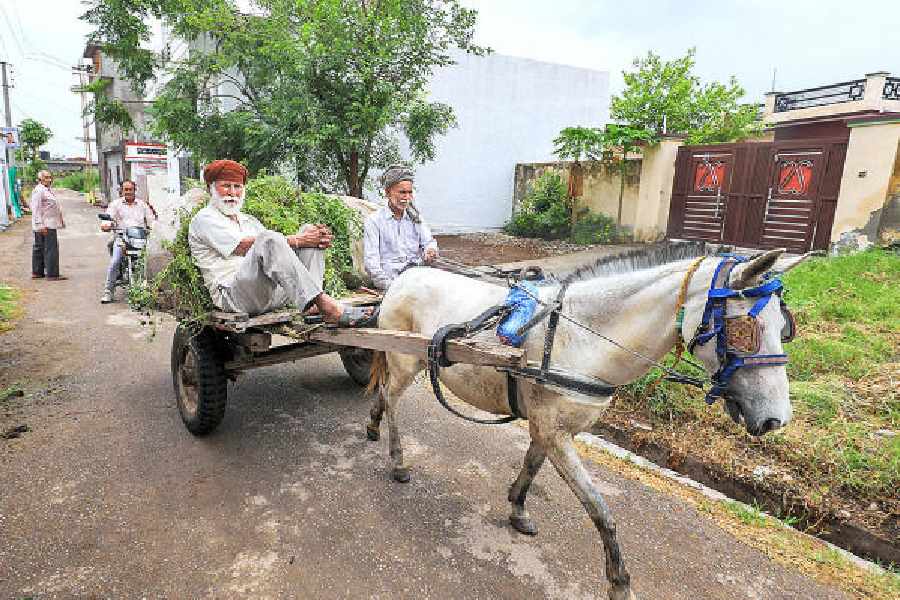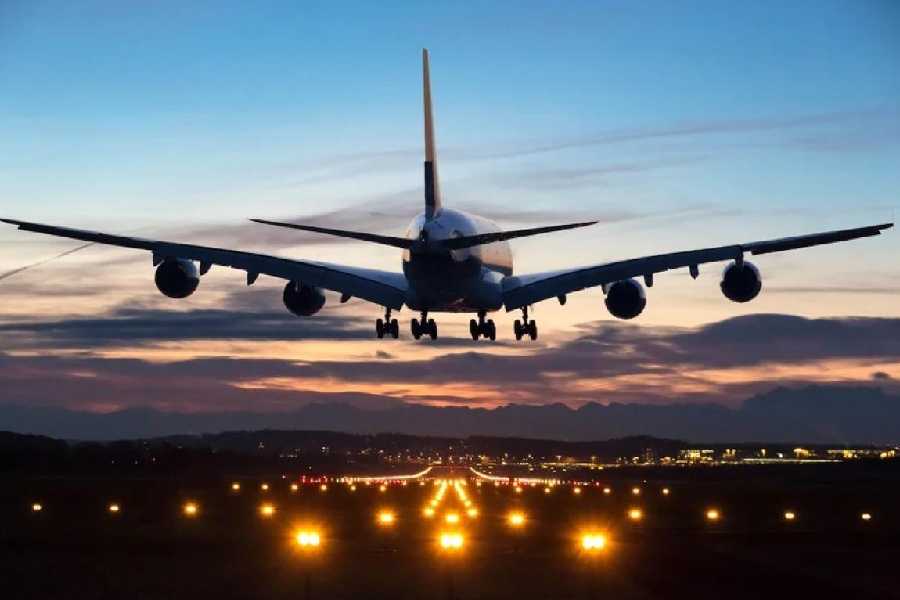 |
| King Jigme Khesar Namgyal Wangchuck and Queen Jetsun Pema after their wedding at Punakha on Thursday. (PTI) |
Punakha (Bhutan), Oct. 13: The only consolation for being piled into buses at three in the morning and hauled up a rutted mountain road in a groaning column — stone-boiled eggs and coleslaw sandwiches at a darkened promontory en route — was that we were probably better off than King Jigme Khesar and his soon-to-be Queen Jetsun.
The austere monks of Dewa Chhen-Poi Phodrang, the Palace of Great Happiness for the untrained tongue, would have imposed the elaborate obligations of tradition on the royals well ahead of our ill-appointed witching hour.
By eight in the morning, their holinesses Je Khempo and Dorji Lopoen and their league of lamas were done with the preliminary invocations on the monastery’s aloof upper deck. There was a clap of cymbals and a troupe began to blow into jelings, a slightly primitive if not also discordant version of the shehnai. Smoke began to billow from chimneys on serried tiers and the air was suddenly redolent with the scent of burning cypress.
By a little past ten, Jetsun Pema, commoner, had prostrated thrice before the Monarch of the Raven Crown inside the Grand Kuenra, or sanctum, brought him an ornate bowlful of ambrosia, emblem and elixir of eternal life, and become Jetsun Wangchuck, Druk Gyal-tsuen, Queen of the Kingdom of Bhutan.
That brought to end a richly wrought and rarely enacted tableau of the mystical and the temporal. Brocaded monks, bedecked royalty, decorated soldiers, liveried guardsmen, a rock-and-timber castle frilled out in silken ribbons. Even a caparisoned baby elephant that Jetsun Wangchuck very evidently wanted to keep her distance from as she emerged briefly mid-ceremony, clutching her husband’s hand, for what must have been a mandatory pit-stop in the day’s many auspicious rites.
She appeared happier and more at ease mingling with subjects released in batches by securitymen onto a maidan adjoining the monastery. Embroidered marquees had been pitched on the maidan’s periphery where members of the royal family and invited dignitaries sat awaiting their turn to congratulate the newly-weds.
King and Queen — he in a goh of gold print and a mustard bodywrap, she in a multicoloured kira, green scarf and foot-long pink cuffs — went from tent to tent doing what newly-weds are meant to while guests are still around. When he came to cross Jyotiraditya Scindia, junior Indian minister for commerce and industry and annulled royal, Jigme Khesar appeared to hover a little longer, powwowing as if with an old mate.
A little distance from Scindia, Devyani Rana of the Narainhity massacre fame waited to muah-muah the King on his cheeks. Every once in a while, Jigme Khesar would take a break from the VVIPs to turn to the hoi polloi seated across the greens. A touch here, a smile there and, pop, back among more fancied company.
Dance troupes took turns to perform mid-field all day, each performance an aping of the previous one although each must have been very different from the other to the initiated eye. The trick lies, a ringside expert suggested, in divining the distinction between nasal decibels and the sequence of limb movement — left to right is radically different from right to left. “Quite as complicated as mystic Buddhist rituals, if you know what I mean,” he said.
The depths of the monastery, where few even among the formally invited had access, echoed with incessant chanting while Buddhist priests conducted their purification and benediction rituals with water and with scented smoke. They were watched in silence by the immediate royal family — the predecessor king, Jigme Singye Wangchuck, his four wives and children, the bride and her family and the Raven-crowned King Jigme Khesar atop the Golden Throne.
“It was a little complex even for us but it was also quiet and intense,” said a member of the royal family later of the ceremonies. “But these things don’t happen every day, perhaps for the last time in my life. Already seems like a thing of the past, such an ornate event.”
But for all the attention lavished on detail, what quietly underscored the worth of what passed at the Punakha monastery today was something as uncontrived as it was unremarked.
Where the monastery stands and where Jigme Khesar and Jetsun Pema became man and wife is the confluence of Bhutan’s two chief rivers — Pochhu and Mochhu, the former designated male in local myth, the latter female. Where the two streams come to meet, islanding the monastery betwixt, is where today’s protagonists became groom and bride, and where they stayed well into the milky dusk, remarkably patient of the unending slow dance ensembles. They’d have been just to seek earlier closure; they had been pulled out of bed too early.









